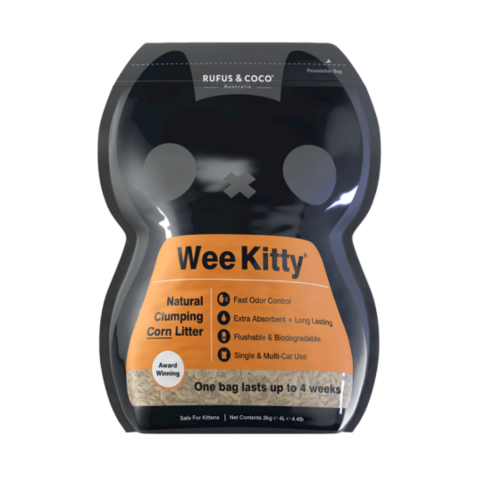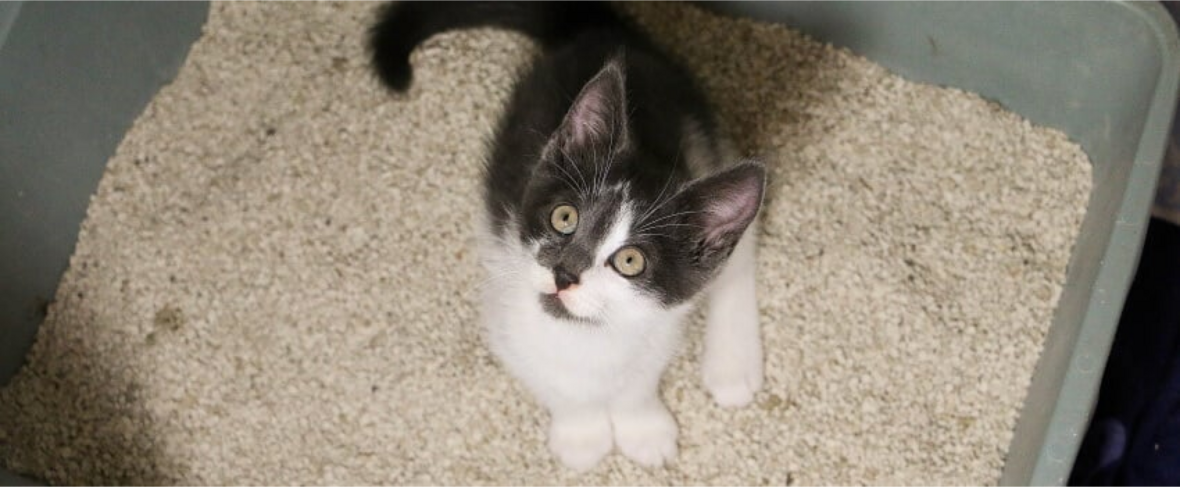Last Updated: 06/05/2025
How Often Should You Change Cat Litter
Find out how often you should change your cat's litter to ensure your cat remains happy and healthy and your home stays odour-free.
Author: Dr Samantha Wycherley BVSc
Reading Time: 5 minutes - short read
As a cat parent, you know the importance of keeping your feline friend comfortable and healthy. But when it comes to litter box maintenance, many people are unsure of how often the litter should be changed, leading to odour issues, health risks, and the potential for behavioural problems in your cat.
In this article, we'll explore the key factors that determine how often you should change your cat's litter, from the type of litter you use to the number of cats you have, to ensure that your cat remains happy and healthy, and your home stays odour-free.
How often should you change your cat litter?
The frequency of changing your cat's litter depends on a number of factors including how many cats you have, the type of litter you're using, and your cat's toilet habits!
In general it's a good idea to scoop the poop and any urine clumps daily and aim to have the entire tray changed and washed every 1 - 2 weeks.
Adopting a good litter box cleaning routine
Establishing a consistent cleaning routine is a great way to keep both you and your cat happy and stop your cat litter from smelling.
For most people this routine will involve daily 'spot cleaning' and periodic deep cleaning. Spot cleaning refers to removing a small amount of litter containing waste, and deep cleaning refers to replacing all of the litter and cleaning the tray as well.

Variables that Affect Cleaning Frequency
Type of litter
It's easy to feel overwhelmed at the amount of different cat litters on the market! You can choose between everthing from clay based litters to corn and crystal types - as well as scented or unscented.
The main difference between litters which affects cleaning frequency is whether it is clumping or non-clumping.
Clumping cat litter (as its name suggests) forms into clumps when it comes into contact with your pets urine or faeces. This makes it easy to scoop out the soiled portion of litter leaving clean litter behind without having to change the whole tray. It does tend to make life easier when it comes to cleaning however it's often priced a little higher than non-clumping litter.


Number of cats
Of course the number of cats can have a big impact on how often you need to change your litter tray - more cats equals more waste! The rule of thumb when it comes to litter trays in multi-cat households is one litter tray per cat + one extra.
Cats need privacy when using the tray so too few trays can lead to behavioural toileting issues as well as leading to a much faster build up of waste and odours. If your cats are sharing trays then it will need to be cleaned much more often - daily spot cleaning and then a full clean every few days.
Two types of litter box cleaning: The scoop and the change
As mentioned earlier, there are two types of cleaning when it comes to your cat's litter tray.
The 'scoop' or the 'spot clean' is something that should be performed one to two times daily. This involves using a kitty litter scoop to shovel out the soiled clumps of urine or poo. You can still use a scoop to remove poop in a non-clumping litter.
The change involves removal of all the old litter and replacing it with a fresh batch.
How to Scoop a Litter Box

Make sure you have your method of disposal handy before you start - this will depend on the type of litter you are using. Some litters are biodegradable and flushable, some can even be used in your garden/compost! Other types are non-biodegradable and will need to be disposed of as rubbish.

It's best to wear gloves when cleaning your cat's tray

Use your pet litter scoop to scoop up the soiled clump

Gently sift the clean litter back into the tray through the scoop

Dispose of the waste appropriately

Rinse your scoop in soapy water and store
How to Change a Litter Box

The easiest way to change your litter box is to use a litter tray liner

Wear gloves

Remove the liner with the litter inside - most will have a tie to pull like a rubbish bag

Dispose of the litter appropriately according to litter type

Wash your tray with a mild dish detergent and hot water

Avoid using any harsh chemicals such as those containing ammonia or bleach

Dry the litter tray with paper towels before putting new litter in (otherwise it will clump)

Apply a new litter tray liner if using

Refill with fresh litter (around 5cm deep for most cats)

Special circumstances
If your cat is having some toilet trouble eg diarrhoea its best to perform a scoop clean every time you notice your cat has been to the toilet and a full clean daily - particularly if you are in a multi cat household and want to avoid spreading any bugs.
Cats that have renal problems or diabetes will urinate large amounts - a clumping litter is ideal for these cases. If you are using a non-clumping litter the urine tends to pool at the bottom and therefore daily cleaning is often required.
Cats are very sensitive creatures and they donât like getting dirty. They have very clean toilet habits and will avoid using their litter tray if it hasnât been cleaned regularly enough. This might mean they start using something else as their toilet - often this will be your bed or carpet!
Consult your vet
If your cat does start avoiding the litter tray, your first port of call should be your vet. Inappropriate urination can have many causes - both medical and behavioural. Check out our inappropriate urination in cats article for more detail.
If your cat gets a clean bill of health and is still avoiding the tray - you might want to try cleaning your tray more regularly, or play around with different litter types - some cats will prefer one type over another.
Cats are such clever pets and one of their many benefits is that they can be easily trained to use a litter tray. Ensuring that their toilet is cleaned regularly, comfortable and appealing for your cat will keep your home odour free and keep your furry friend feeling happy.
Further Reading
Want to know more? Check out our Discover Page for more tips on keeping your pets happy and healthy.